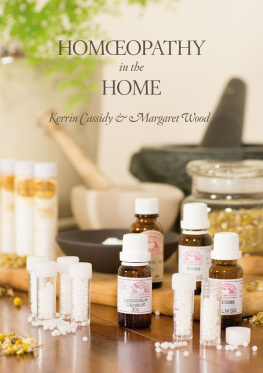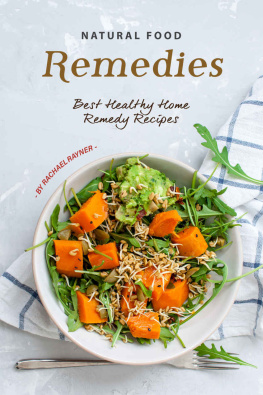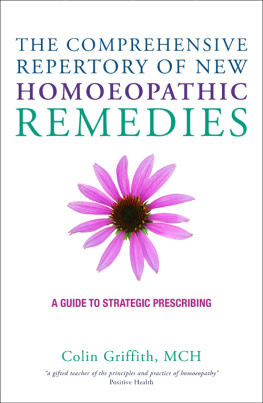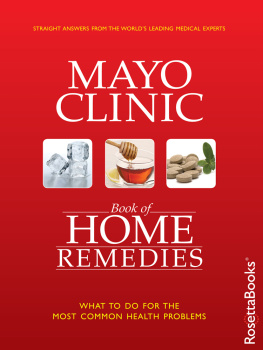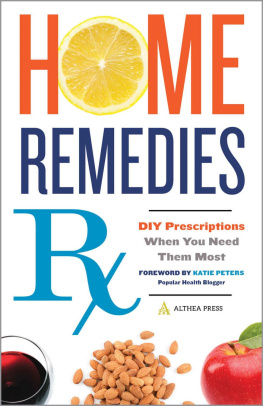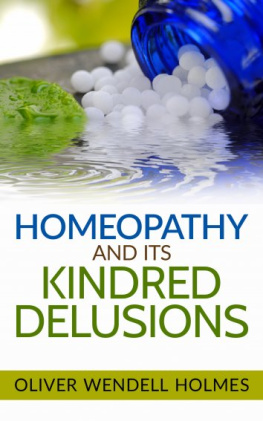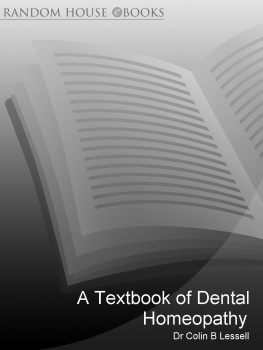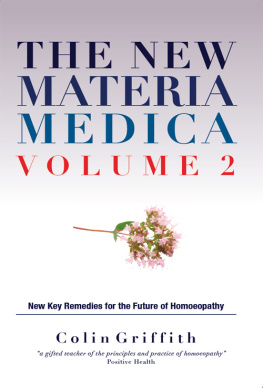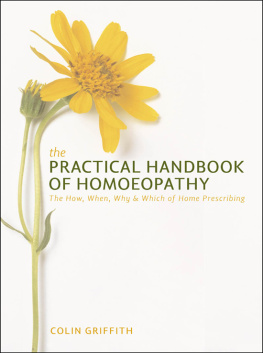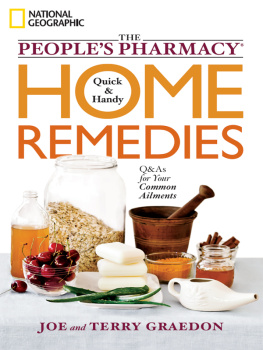Homoeopathy in the Home
Treatments for common complaints
Kerrin Cassidy & Margaret Wood
First printing 1993 as Homoeopathy and First Aid
Second printing 1999
Third printing 2000
Revised edition: 2013
Copyright by Kerrin Cassidy & Margaret Wood
All rights reserved. Without limiting the rights under copyright restricted above, no part of this publication may be reproduced, stored in or introduced into a retrieval system, or transmitted, in any form or by any means (electronic, mechanical, photocopying, recording or otherwise), without the prior written permission of the copyright owner.
ISBN: 978-0-646-5902-9
ePub: 978-0-9922883-0-3
MOBI: 978-0-9922883-2-7
Distributed by Port Campbell Press
www.portcampbellpress.com.au
HOMOEOPATHY IN THE HOME:
Treatments for Common Complaints
A Homoeopathic Repertory and Materia Medica
By Kerrin Cassidy & Margaret Wood
Serpentarius Healing Centre
Find us at
www.serpentarius.com.au
This book is dedicated to every person who has ever witnessed a child's pain
Homoeopathy is a system of medicine that uses a natural law of healing to stimulate the body's own healing powers. This law states that any substance that is capable of producing symptoms in a healthy person can be administered to promote health in an individual who is unwell and displaying a similar disease picture. Philosophers such as Hippocrates and Paracelsus stated this law but it was only in the late eighteenth century that it was observed and thoroughly investigated by Samuel Hahnemann, the founder of homoeopathy, and became the basis of the homoeopathic approach.
For example, if an individual has a skin eruption that is very itchy, a substance which is capable of producing a similar itch in a healthy person can be used to stimulate the bodys natural processes to heal the eruption.
Homoeopaths believe that by proving (german prfung which means testing), a substance on a healthy individual the curative powers of that substance are revealed.
Because homoeopathic medicines are used in a purely energetic form and often are diluted to the point where no material substance is remaining, there is no toxic effect. However, homoeopathic remedies are prepared in such a way that their latent healing energy is actually enhanced.
In 1790, the science and art of homoeopathy was discovered by Dr. Samuel Hahnemann in what was then known as Saxony, now Germany. Hahnemann was a doctor of medicine, a linguist fluent in English, Italian, French, Greek, Latin and Arabic, and a chemist, and was widely published in all disciplines. From his work as a physician, translator and pharmacologist, he came to believe there must be a natural means of healing that did not use substances or methods that were harmful or potentially dangerous to the patient. His rediscovery of the natural law of healing, which he called the Law of Similars, was the beginning of a meticulous investigation into how this law could be utilised. As a result, to-day we have a vast materia medica of homoeopathic remedies which details the symptoms that these remedies may cure.
In this book, a limited number of homoeopathic remedies are explored. This selection is based on those remedies that are commonly considered for the treatment of acute conditions in every day situations at home.
Homoeopathic treatment has the potential to do much more than this, but to understand the full range of remedies available and their application, a professional course is necessary.
Homoeopathic remedies are prepared by a special process that enhances the healing action of the substance whilst minimising the amount of remedy that needs to be taken. This process is called potentisation. Potentisation involves the dilution of the original substance with a menstruum to a particular specification according to the potency required, followed and accompanied by a dynamic potentising action called succussion. Succussion is carried out at each step of the dilution process.
The succussion technique activates and magnifies the healing energy inherent in the substance, whilst the dilution process is carried to the point where there is none of the original crude material left in the remedy. Hence, even substances that are potentially toxic in their crude state can be used with total safety as their toxic components have been removed by dilution whilst their healing powers have been enhanced by succussion.
Homoeopathic remedies are selected for the person and not for the condition that the patient is experiencing. For this reason, the selection of the homoeopathic remedy to be used is based on the way in which the individual responds to the problem: the individuals characteristic signs and symptoms; what part of the body is affected; and how this feels to them. Of particular importance in this selection are such things as the sensations felt in the affected area, the time of day at which the condition is worse, the effect of warm or cold application to the person or the affected part, and any other symptoms which may be occurring at the same time, even though these may not appear to be physiologically related.
The condition is seen as a disorder of the person, not just the part, and the signs and symptoms are considered as an expression of the inner person - the vital force.
Homoeopathy acts on an inner dynamic level, the Vital Force as it is called, and often the first sign of response after administration of the indicated homoeopathic remedy is a sense of well-being, even though the physical symptoms may not have greatly altered. The inner person's own healing forces are being activated. The correct remedy will then have a rapid and gentle effect on the patient, restoring the body's natural balance to bring about a resolution of the disorder.
Even though homoeopathic remedies work very quickly, the bodys curative processes are not necessarily as fast. For example, Hepar Sulph may give rapid relief in a case of boils, but the boils themselves will take some time to resolve.
The homoeopathic remedies included in this book are for the first stage of treatment of acute conditions. In many situations, this is all that is needed for total restoration to health. However, if the condition persists or recurs, professional advice should be sought.
Read this book carefully and familiarise yourself with the information about the individual remedies. In this way, you will be able to effectively use homoeopathic remedies at home.
The remedy to use is the remedy that best fits the signs and symptoms of the patient to the best of your knowledge. The selected remedy will speed the healing, even if it is not a perfect match. In some cases, more than one remedy may seem to be applicable, but only one remedy should be used at a time.
As homoeopathy is an energetic form of treatment, care must be taken to see that the remedies are not subjected to excessive energetic interference. For this reason, the remedies need to be kept in a cool, dark place that is not subject to any form of strong odour or electromagnetic energy (mobile phone, television, refrigerator, microwave, fluorescent lights, direct sunlight, etc.). A good place is a cupboard that does not contain strong smelling substances such as detergents, toothpastes, and oils, and which is away from sources of direct heat. The odour of eucalyptus or other volatile oils, of mothballs, liniments and strong smelling cough mixtures will interfere with the energy of the remedies and may destroy their healing powers.
If you wish to carry your remedies in the car, it is advisable to seal them in a small container and placed under the passenger seat. This will protect them from the effects of fumes and excessive heat.
Next page
